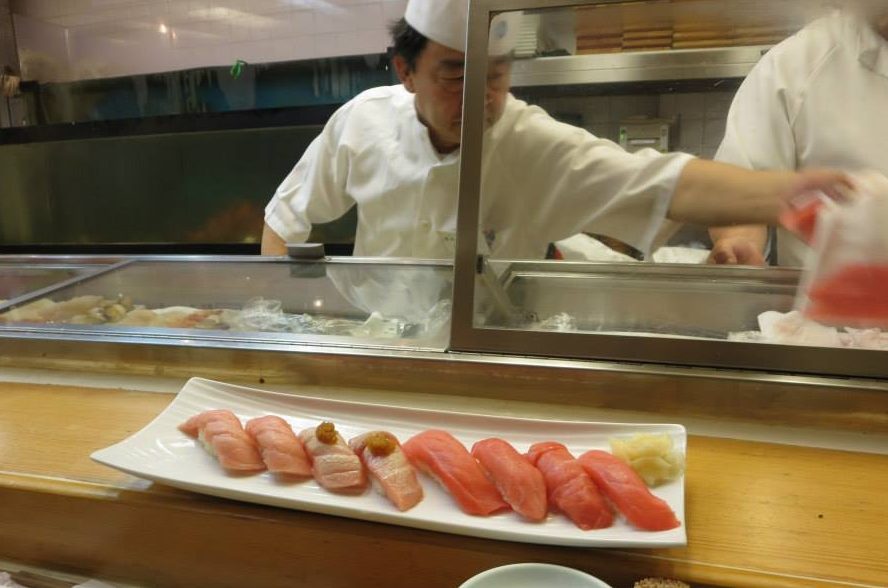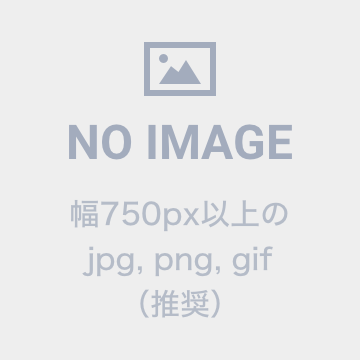
The History of Tsukiji, Big Changes Toward 2020
It’s 3 am in Tsukiji, Tokyo. Tourists have started gathering in front of tiny sushi stands in the dark alleys. Those sushi stands open at 5 am, the same time as the fish auctions begin, and each stand seats 10 to 15 customers. Waiting 4 hours before sunrise to eat sushi is not as crazy as it sounds now, that the Tsukiji sushi stands have became one of the biggest attractions in Tokyo.

Fish auction starts at 5 am.
Most of the people describe the experience as “The best sushi I’ve ever had with the best quality fish at a reasonable price,” despite the waiting time. The throngs of people making the early morning pilgrimage is testament to the remarkable quality of seafood offered at Tsukiji market.
The history of Tsukiji fish market goes back to the mid 17th century. A major land reclamation took place on the estuary area of Edo, the old Tokyo. The kanji of Tsukiji (築地) literally means “built-land.” In the early years, the reclaimed land was used for samurai residences. Tsukiji’s international connection began well before its fame as an international seafood market. In the mid-1800’s, Tsukiji started becoming an international business center and residential center for foreigners. In 1923, a major earthquake struck Tokyo, severely damaging the original Tokyo fish market. The entire market was rebuilt in the Tsukiji area. It opened as Tsukiji fish market in 1935. Small wholesalers and retailers surrounded the market, forming the signature inner-outer structure of the market. With its rich food culture, Japan consumes the most fish in the world, and as Japan’s major seafood market, it did not take long for Tsukiji to become the biggest fish market in the world.

The sushi chef makes your order right in front of you.
The world’s biggest fish market operates 24 hours, with over 42,000 people and 19,000 vehicles going in and out each day. Tsukiji is surprisingly compact, with nearly one thousand companies packed into a space of just over 38,800 square meters, conducting a total transaction of 1.6 billion yen on average to move 1.6 metric tonnes of seafood per day.
Tsukiji is hectic yet lively, and full of energy. The 80 year old market has been struggling to keep up with the increased traffic, and this congestion along with deteriorating buildings created a need to consider a new approach. The relocation project is currently in progress and the Tsukiji fish market is moving to a new site in Toyosu next year.
In late 2015, Tsukiji Uoichiba Co., Ltd.,one of the seven wholesale companies in Tsukiji, officially announced that they have successfully received chain of custody (CoC) certification, which would allow the company to deal MSC and ASC products. The company also noted, “The past two Olympic games set a new standard; some foreign-owned hotels started using MSC and ASC as prerequisites for their seafood procurement. It is very possible that Tokyo 2020 will adopt the same standard. These certifications will become the entrance evaluation for the seafood business in the near future.” This commitment is a big step forward for Japanese seafood industry.
If eco-labels such as MSC and ASC are the new global standard, this suggests Japan cannot provide enough fish from its waters since it only has three MSC certified fisheries. Without enough certified seafood, Japan would have to rely on imports, which would defeat the purpose of eating freshly caught seafood, especially sushi and sashimi, in Japan. Tsukiji Uoichiba Co., Ltd. not only took initiative by showing Japanese fisheries that the market is willing to buy and sell certified seafood, but also encouraged the Japanese fish industry to get certified towards 2020.
Since then, Daiichi Suisan Co., Ltd., another wholesale company in Tsukiji, successfully received CoC certification, and a tuna fishery in Miyagi prefecture achieved the MSC certification for its pole-and-line skipjack and albacore tuna.
In order to welcome foreign guests and promote Japanese fish-eating culture and Washoku, – traditional Japanese cooking – the Japanese seafood industry needs immediate solutions. The next few years will be very challenging for Japan and its seafood industry. However, we can view this historic event as an opportunity to create a revolution in the market. Implementing sustainable seafood in the market is the key to the revival of Japan’s seafood industry, and the future of the world’s biggest fish market.
http://www.tsukiji-uoichiba.co.jp/mscasc2015.pdf
http://www.shijou.metro.tokyo.jp/english/





